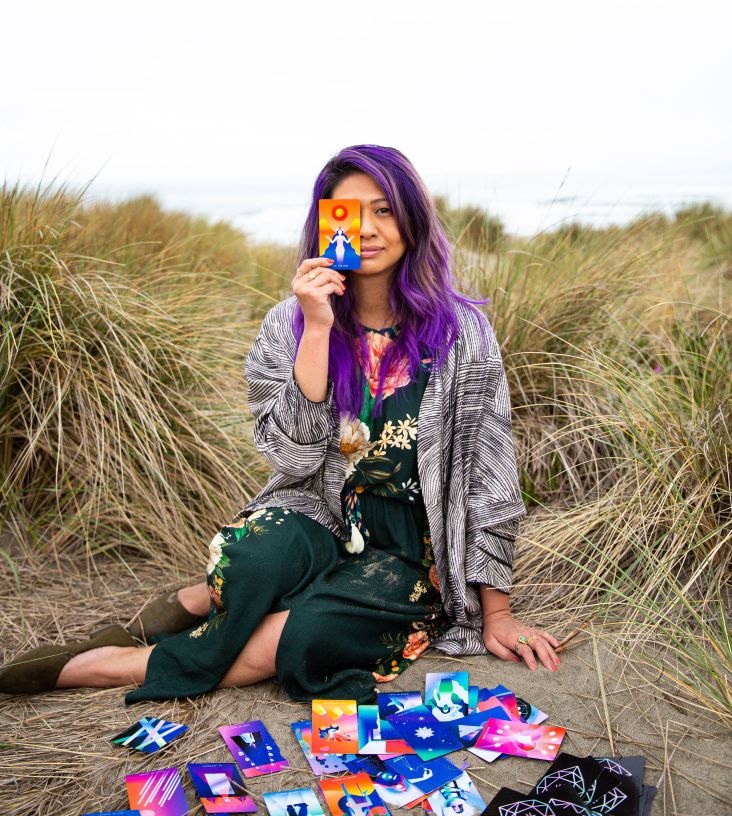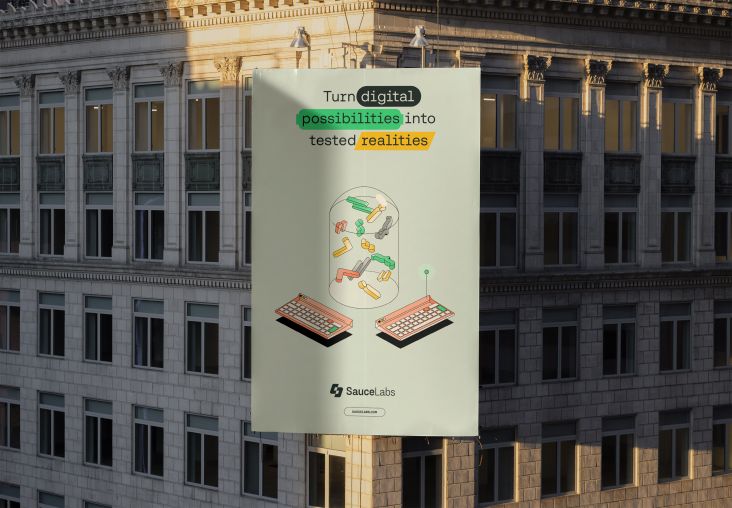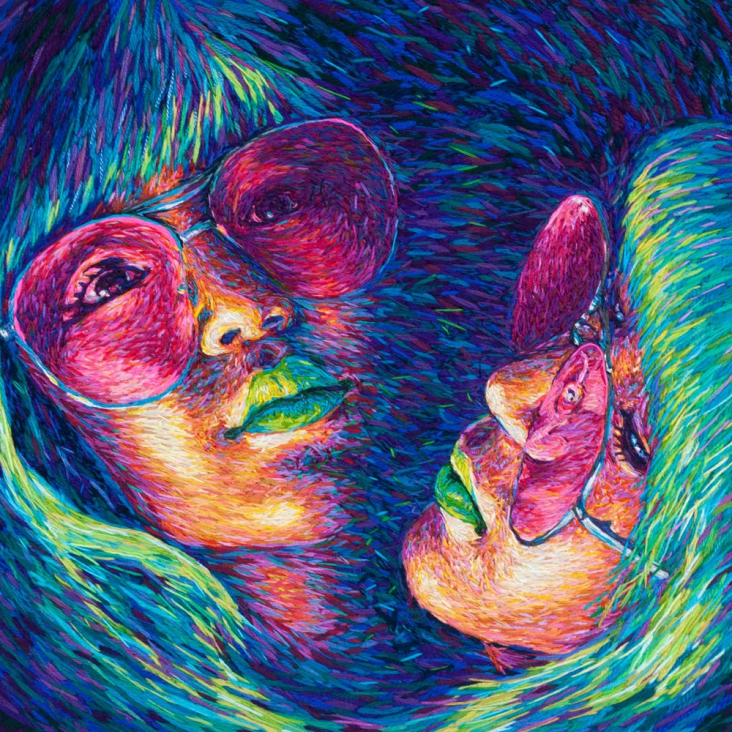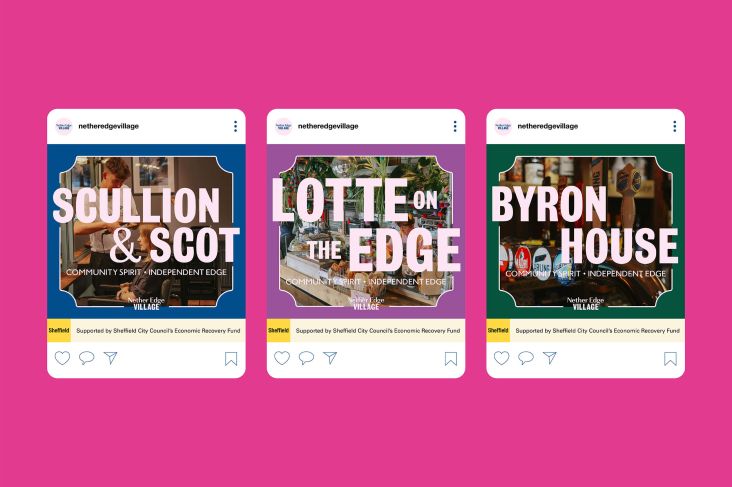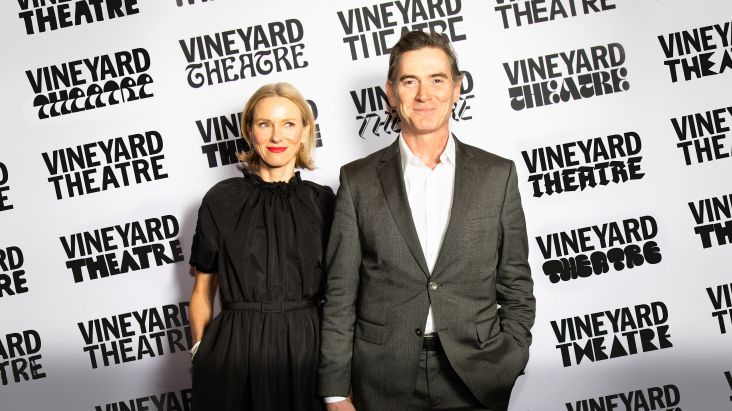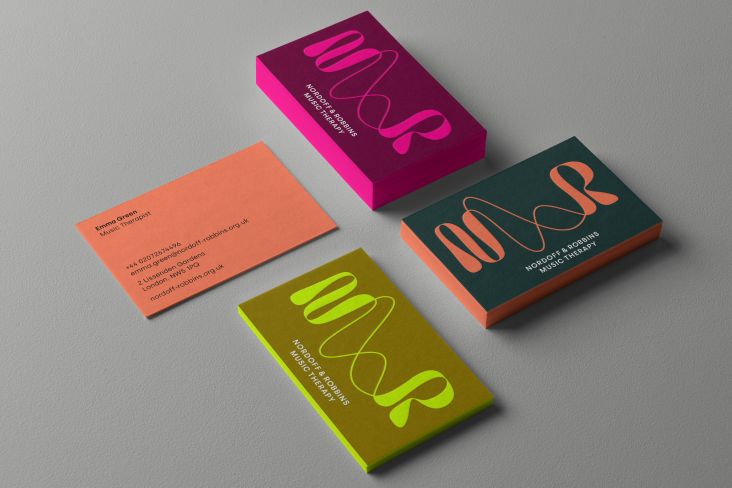Human exploitation of nature and the climate crisis dominate Fiona Campbell’s work
Sculptor and artist Fiona Campbell creates drawings in space, blurring boundaries between sculpture, drawing and installation. Her work is hand-made and labour-intensive, using recycled and found materials that relate to our relationship with matter, nature, and ourselves.
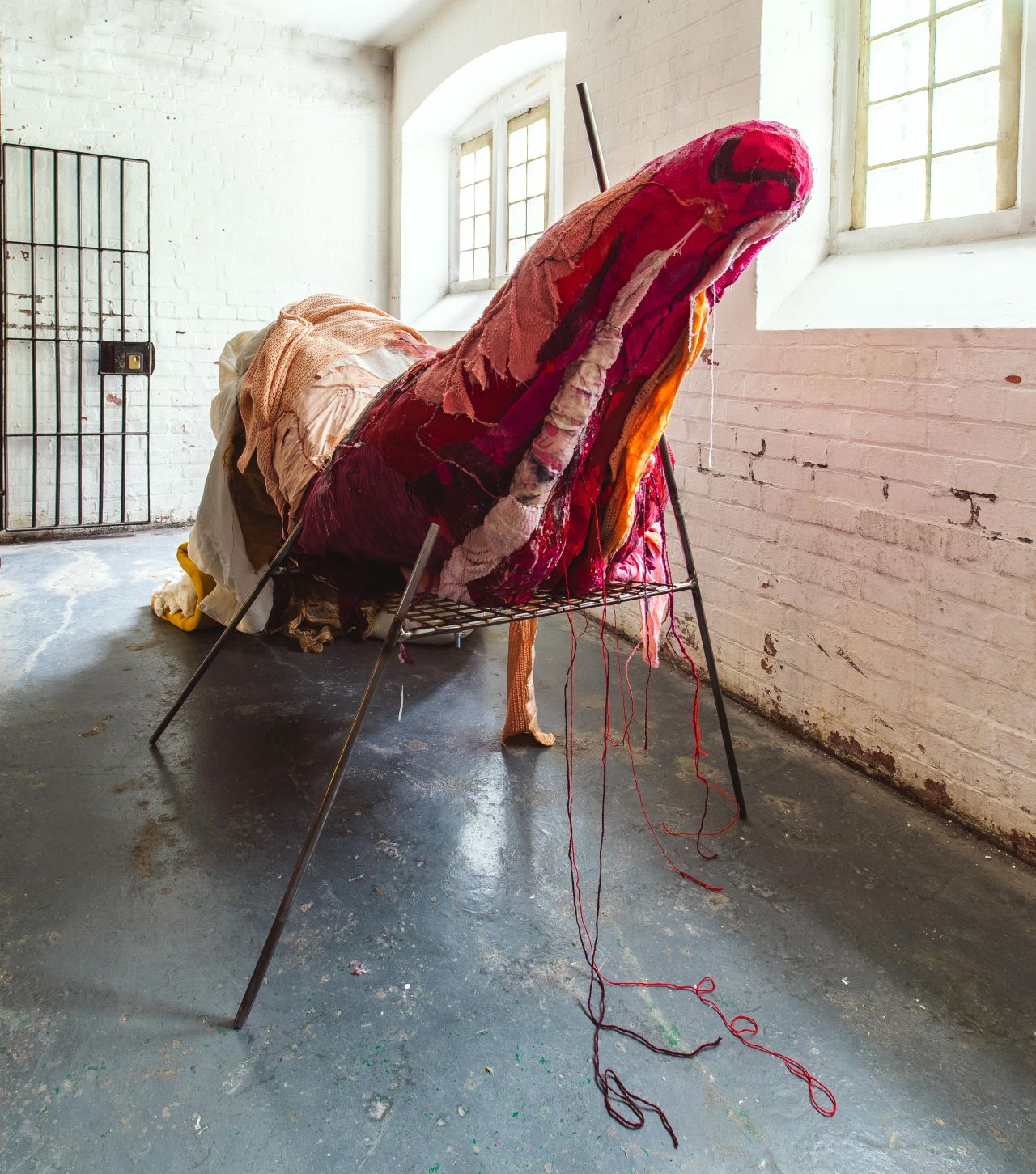
Tongue Recycled and found materials. Photo Tchad Findlay
While working as an invigilator at Hauser & Wirth in Somerset, home to a programme of art exhibitions, Fiona Campbell watched over and over again the video Our Daily Bread, a film by Niklaus Geyrhalter. The widescreen spanned the entire wall of a gallery, and the sound of cows being slaughtered, the squealing of pigs, and pesticides spraying on a sea of swaying yellow sunflowers.
The Austrian filmmaker's documentary takes a cold, hard look at how food is produced in Europe without any commentary. It's a stark reminder of the food production process.
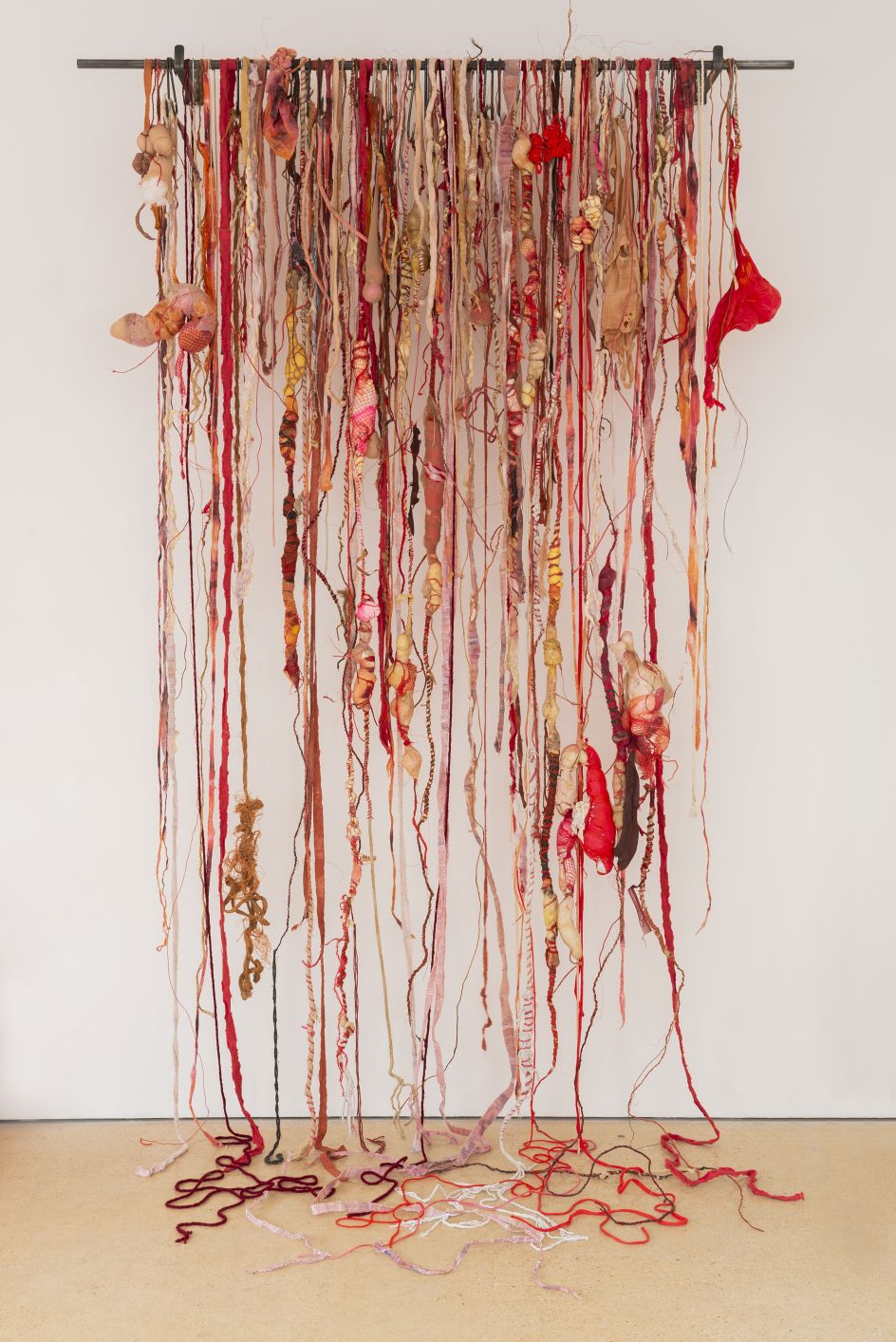
Glut 2018 recycled & found materials. Photo Mike Garlick
It had a huge impact not only on Campbell's creative work but also on her lifestyle choices as she turned vegetarian. She has become increasingly concerned with the environment, human exploitation of nature and over-consumption, which has taken her work into the sphere of artivism. "Much more recently, the urgency of the planet's breakdown much more prominent in all our consciousness became much more significant in my work," Campbell says.
Her work entitled Glut is a response to over-consumption, the plastic in the oceans and human exploitation of nature. It is also informed by Campbell's own personal loss. Her dog was dying during the making of Glut, a sculptural installation, and Campbell used personal items such as her beloved dog's lead.
Tentacularity permeated Campbell's work. She explains the term as "all the linear forms entangled throughout life – from micro to macro – rhizomatic connections. Fungi is becoming a very hot topic of how it might help our planet. The mycelium that links trees and roots, The tentacle-like form that is either feeding or reaching is a metaphor for the interconnectedness."
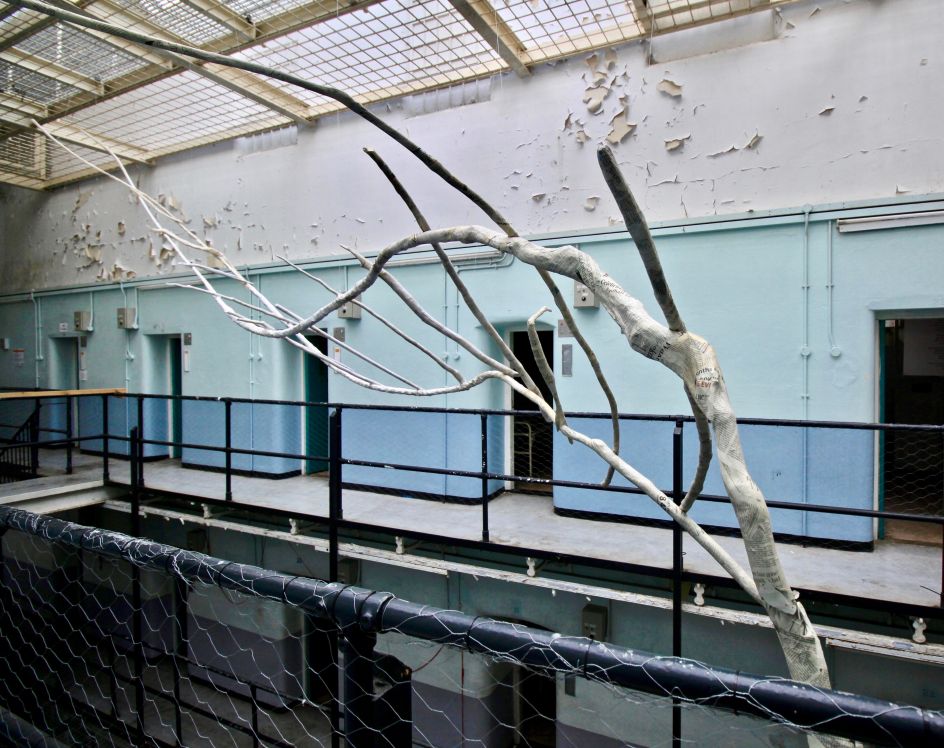
Snakes and Ladders, recycled and found materials. Photo by Dave Cable.
As Donna J. Haraway, an American Professor Emerita in the History of Consciousness Department and Feminist Studies Department at the University of California, puts it, the tentacles stand for the other, the non-human and implicitly pose the question of how a perception that is not two-armed, two-eyed, two-eared and one-brained, but many-armed and many-brained can generate other forms of knowledge.
Using found and recycled objects has always been an aspect of Campbell's work. Brought up in Kenya with a 'make-do' culture, it has been a key element in the artist's work. "I've always used reclaimed, found materials almost from the word go, and it has built up, so it is now an essential element. Before, it was a background factor, but now it is a much more dominant feature."
Scavenging for art materials is a part of Campbell's life now. On walks, she always picks things up and returns them to her Somerset studio. People also donate materials, and scrapyards are "amazing treasure troves. I love rust – rusty steel always looks amazing against the landscape. I love combining and juxtaposing materials the contrast – fragile and stronger."
There is a growing body of artists who are using their art to provoke social change. As writer M. K. Asante says: "The artivist (artist + activist) uses their artistic talents to fight and struggle against injustice and oppression—by any medium necessary. The artivist merges commitment to freedom and justice with the pen, the lens, the brush, the voice, the body, and the imagination."
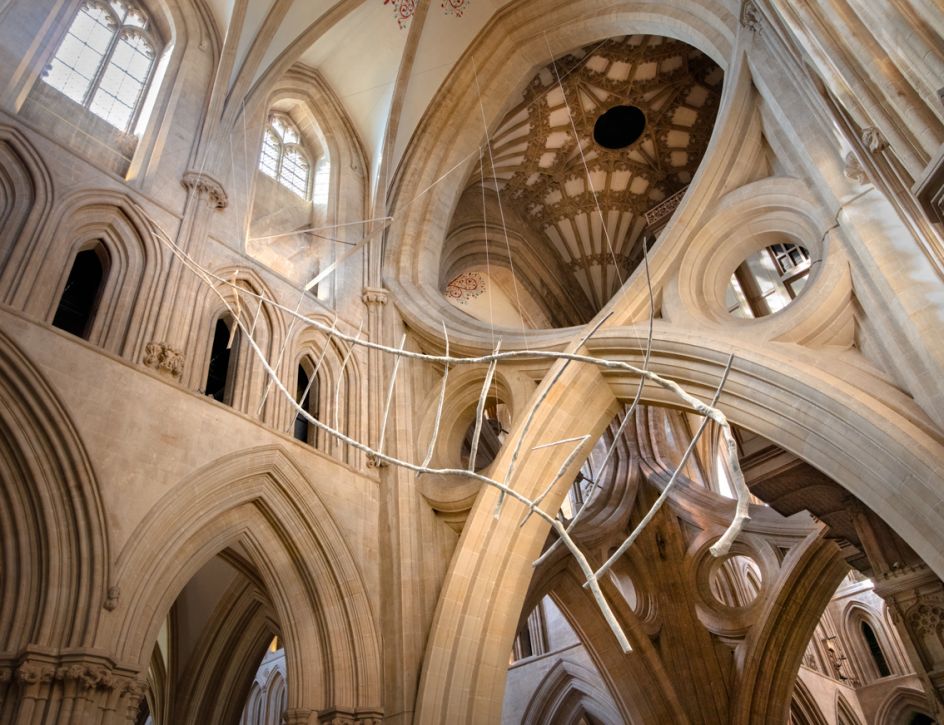
Snakes and Ladders. Found and recycled wood, paper, plastic, wire, wax. Photo Barry Cawston
But can art really promote a change of attitude and perception? Campbell thinks it is possible. "I think art taps into your emotions and has an impact that way. Culture is always a reflection of what's happening around us, and art challenges us to re-think and change our ways to open up our imagination."
In 2021, Campbell installed a piece called Martyrdom of the Ten Thousand in Chichester Cathedral. The title echoes Renaissance religious paintings of the same title. It took five days to install and many months to make. It was a physically challenging project, with Campbell climbing up incredibly tall ladders to attach more than 50 pieces of work suspended on the cathedral's incredibly high ceilings.
The work was originally created for Together We Rise by Royal Society of Sculptors members and curated by visual arts advisor Jacquiline Creswell.
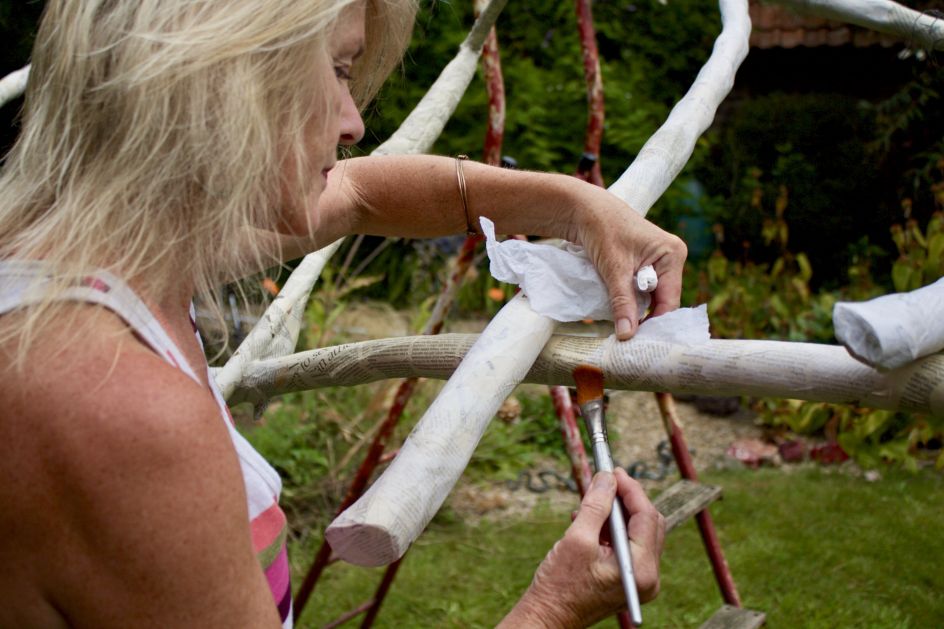
Fiona Campbell making one of her giant ladder forms. Photo by Jason King.
Multiple forms suspend, rise and pour. Some appear skeletal, poised between completion and incompletion, in varying stages of translucency and decay. Stifled and vulnerable, the ghostly forms suggest pain, loss, death, and resurrection.
Campbell explains: "I used recycled materials that are hand-sewn, wrapped, tie-dyed with homemade plant inks, and waxed over woven structures. Stitch by stitch, the labour-intensive process, adds to the message of care and repair. While raising awareness of pangolins, my work is a way to channel and overcome loss, make do and mend."
The project highlighted the illegal trafficking and slaughter of pangolins, the world's most trafficked mammal. Over one million of these mammals were poached in the past decade, and all eight species are at risk of extinction. Their meat is considered a delicacy in some areas of the world, and pangolin scales are used in traditional medicine and folk remedies. When mixed with bark from certain trees, the scales are thought to neutralise witchcraft and evil spirits.
"People were intrigued by pangolins, and a conversation about the plight of pangolins began. Visitors were coming along and wondering what I was doing," Campbell says. "I asked what they thought of the work, and they thought they were beautiful sea creatures, and I had conversations with them about pangolins. It's quite shocking how many people don't even know what a pangolin is."
There are 17 decommissioned prisons in the UK, and many of these buildings struggle to find a buyer. These disused spaces are eerie, emotional and deeply disturbing but make a wonderful, provocative art gallery.
Campbell's project, Snakes and Ladders, was a large-scale installation, playing on the game of chance, about the arbitrary nature of fate. Three of the smaller ladders were created in her Cells Residency at Town Hall Arts, Trowbridge, 2019, in response to the Victorian cells.
She added to these to create the series of dysfunctional ladders and hangings for B-Wing, a project co-curated in Shepton Mallet Prison (decommissioned), reflecting the prison's history and confronting political and environmental issues.
The work was inspired by Piranesi's The Bridge, from The Imaginary Prisons series, resonating with concerns around freedom and confinement, the endless human cycle of striving, greed, suffering and waste.
"The series of ladders were about a hopefulness of us escaping our barriers," explains Campbell.
As we all try to make sense of what's happening in the world today, art is a means of grappling with these difficulties – and bringing some positivity into the picture, as Campbell does with her work – that art is much more than the purely aesthetic but also have a social impact, and can even help to change people's minds and hearts.

















